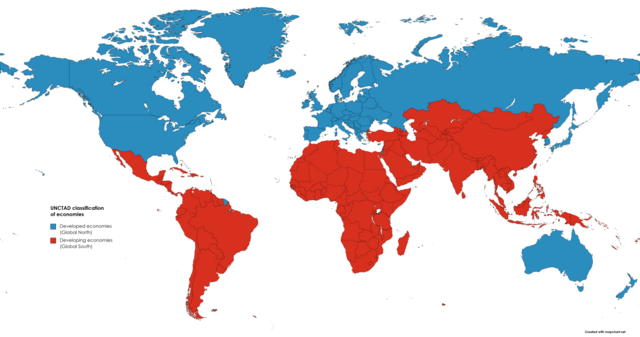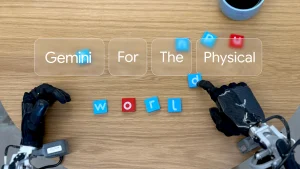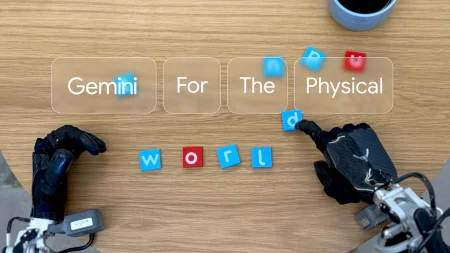The rise of DeepSeek-type AI is giving the Global South something more valuable than oil or minerals: access to cheap external intelligence. This could herald a new world order, writes Satyen K. Bordoloi.
Over the last month and a half, I’ve been using DeepSeek; it’s become my go-to AI. Yes, it is that good. Despite this, I – or anyone else – could never predict what happened on January 27 when it sent US tech stocks on a tailspin, wiping a whopping $593 billion from NVIDIA’s value in a single day.
Though it recovered in the week, the message was clear: a relatively unknown large language model (LLM) from China had rattled the foundations of Western AI dominance. DeepSeek stunned the world with the quality of its results and remarkably low cost for training and token usage. Some have called it the beginning of the end for Western AI.
That assessment is inaccurate. No Western AI company is going anywhere till it continues to provide value. However, DeepSeek’s rise signals something far more profound: the beginning of the Global South’s ascent not just in the AI race but in economic growth. Unlike other technological advancement this millennium, the rise of affordable, locally accessible AI has the potential to erase global inequities by empowering citizens with dirt-cheap intelligence. More than Communism ever did, this threatens the capitalistic world order.

The North-South Divide: A Century of Disparity
The 20th century was defined by the Cold War between Communist and Capitalist states. The 21st century, however, is being shaped by the stark divide between the Global North and the Global South. The Global North, comprising wealthy, industrialised nations, holds most of the world’s capital. In contrast, the Global South, home to most of the world’s population, is rich in resources but plagued by poverty, conflict, disease, displacement, corruption, economic inequality, political instability, etc. Real change will occur when the economic disparity between these two regions is addressed. And that change cannot happen unless intelligence—once a luxury—becomes so affordable that everyone in the Global South can access it.
Consider this: in India, seeking legal advice often requires paying a lawyer hefty sums for the most straightforward counsel. For many, this cost is so prohibitive it leaves them without access to legal remedies. Enter AI models like ChatGPT, Gemini, Claude, or DeepSeek. These tools provide instant responses to legal queries, often for free. While these responses may occasionally require cross-referencing to avoid hallucinations, the ability to access intelligence worth thousands of rupees for cheap is revolutionary. Hundreds of thousands of such use cases will see the slow but eventual upliftment of the Global South, thanks to such cheap, accessible intelligence.

The Cost of Intelligence: A Barrier to Progress
The world as we know it has been shaped by the application of human intelligence. Every human can lift their hands, but whether they are used to make shoes or write code depends on the application of logic and intelligence. The ability to follow instructions and execute tasks is intelligence, and its externalisation through AI has turned it into a commodity that can be scaled exponentially, but at a price. Thus, it is not resources like oil or minerals that’ll alleviate a nation’s suffering but the access to such external intelligence. This means that those who control AI wield immense power—they can dictate its cost and, by extension, the cost of nearly everything else in the world.
For us in the Global South, the high cost of Western AI models like ChatGPT and Gemini has been a significant barrier. The free tier can do things, but the real tools in the paid tier are prohibitively expensive for individuals and businesses in developing nations, exacerbating the divide between the Global North and South. DeepSeek, in this sense, is a game-changer. With its operational efficiency, it makes AI dirt-cheap, making intelligence accessible to those who need it most.
DeepSeek charges $0.55 per million input tokens and $2.19 per million output tokens, compared to OpenAI’s ChatGPT, which charges $15 and $60, respectively. This dramatic cost reduction is made possible by its innovative architecture. Despite its 671 billion parameters, DeepSeek-R1 activates only 37 billion per forward pass, making it significantly more resource-efficient. This efficiency allows it to operate without relying on expensive, high-powered AI chips monopolised by Western companies. Moreover, DeepSeek’s permissive MIT license allows developers to inspect, modify, and use its models freely. Within days of the Wall Street tech rout, apps riding DeepSeek’s API began appearing.

This open-source approach breaks down the entry barriers that have plagued the AI industry. Affordable AI can empower developing nations and companies inside them to address pressing challenges and participate more fully in the global economy. Then there’s the part where developers have been surprised by how well DeepSeek runs locally on mobile phones. This decentralised AI on Edge Computing makes AI accessible to anyone with a smartphone, even without the internet. The implications are profound.
To put it another way, this is the cheapest intelligence has ever been. Such affordability will have unintended consequences, as no one can offer intelligence at such low costs without upending the existing world order. China, often labelled a communist country in name only, has achieved something revolutionary: by making intelligence dirt-cheap, it challenges the very foundations of capitalism. The communists dream of “revolution”. But this cheap AI revolution is better, fairer and more equitable.
The Global Impact: Shattering Tech Hegemony
As I wrote in another article for Sify, DeepSeek is not the only Chinese AI model making waves. Kling, from Kuaishou Technology, democratises video creation, allowing users to transform written descriptions into high-quality video content. Vidu 2.0 from Shengshu Technology does the same, except faster, generating videos in 10 seconds. By combining a universal vision transformer (U-ViT) model with a proprietary interference accelerator, Shengshu has slashed costs and improved efficiency, making video creation accessible to a broader public. Then there’s Inspur, Zhipu AI, ByteDance, and MiniMax, participants in this AI revolution in China.
Such was the impact of DeepSeek that within a week of it ratting US stocks, India decided to join the party as the Government of India announced a new Artificial Intelligence (AI) policy as part of its ambitious IndiaAI Mission. Union Minister Ashwini Vaishnav revealed plans to develop an indigenous AI model to compete with global AI platforms like DeepSeek and ChatGPT. It includes establishing a high-end AI computing infrastructure with over 18,000 Graphics Processing Units (GPUs) to support AI innovation and create AI models attuned to Indian languages and cultural contexts.
This move, looking more reactive than proactive, is nonetheless welcome. This could signal a chain reaction where other nations in the Global South take inspiration and invest in building their own AI ecosystems. It’s not just about the models DeepSeek offers but the simple yet revolutionary idea of affordable AI that will cause a seismic shift worldwide.
The implications are staggering. We are already in a future where high-quality intelligence, like internet access, is moving from a mere luxury to a fundamental right. In this new era, the cost of external intelligence will dictate power structures and reshape the century, much like oil did last. The axis is shifting. The time for the Global South to rise may finally be here.
In case you missed:
- DeepSeek not the only Chinese model to upset AI-pple cart; here’s dozen more
- Unbelievable: How China’s Outsmarting US Chip Ban to Dominate AI
- Nuclear Power: Tech Giants’ Desperate Gamble for AI
- Quantum Leaps in Science: AI as the Assembly Line of Discovery
- Why is OpenAI Getting into Chip Production? The Inside Scoop
- Rogue AI on the Loose: Can Auditing Uncover Hidden Agendas on Time?
- Apple Intelligence – Steve Jobs’ Company Finally Bites the AI Apple
- OpenAI’s Secret Project Strawberry Points to Last AI Hurdle: Reasoning
- Google Falters Under AI Onslaught: Future of Search in Peril?
- You’ll Never Guess What’s Inside NVIDIA’s Latest AI Breakthrough









